Never Too Old – Part 1
Climbing’s current fixation on youth teams and 12-year-olds crushing 5.14s has created a myth that the sport is purely the domain of adolescents and young adults. In this three-part series, we look at three Ontario-based climbers who destroy the popular notion that climbing is just a young person’s sport.
At age 63, Mike Grainger is as passionate about climbing as many of the young shirtless, tattooed beanie-wearing climbers that seem to spam your Instasham and Fakebook feeds. The obvious difference is that Grainger is old enough to be their father – or even grandfather.
We caught up with Grainger and talked about travelling, climbing gyms and being agnostic about climbing ethics.
At age 63, Mike Grainger is as passionate about climbing as many of the young shirtless, tattooed beanie-wearing climbers that seem to spam your Instasham and Fakebook feeds. The obvious difference is that Grainger is old enough to be their father – or even grandfather.
We caught up with Grainger and talked about travelling, climbing gyms and being agnostic about climbing ethics.
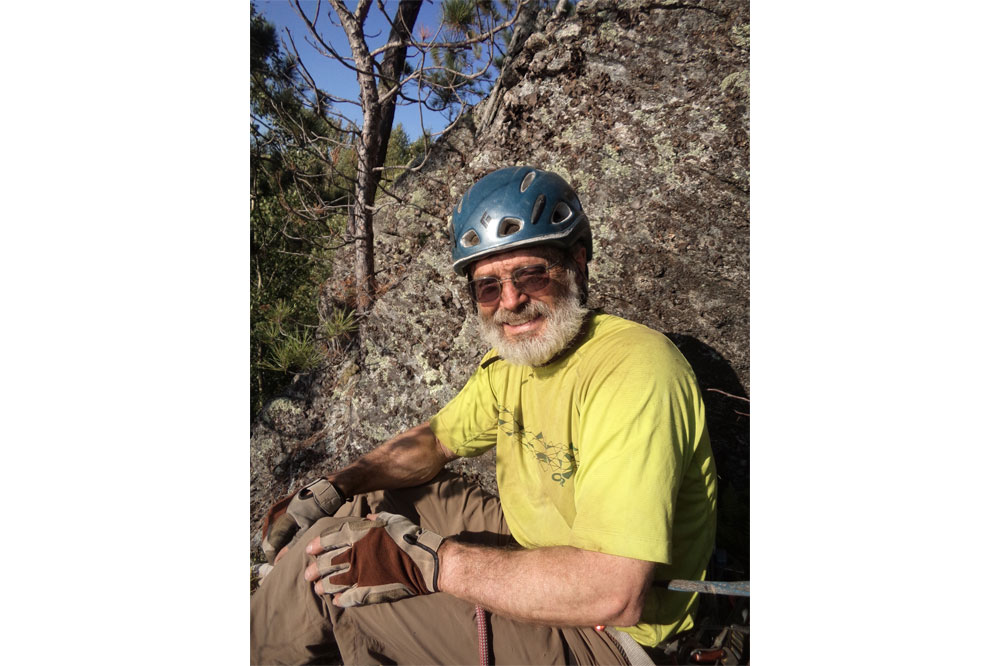
Mike Grainger after the FA of Are You Ready to Rumble 5.9+ at Bark Lake.
You got into climbing relatively late in life. How did you get into the sport and how old were you at the time?
Mike Grainger: In the summer of 1999, at the age of 46, I went for a hiking trip with the Skyline Hikers of the Canadian Rockies and discovered that the steeper and more strenuous the hike, the better I liked it. The next year I returned to take an Intro to Mountaineering course with Yamnuska and did some scrambles in the Banff area. From there it was an Alpine Snow and Ice course, followed by a couple of attempts on Mt. Robson. I eventually started to focus on rock climbing so I could tackle more technical mountaineering objectives. Climbing was a vacation activity for me until I retired in 2008. I didn’t start leading until 2009.
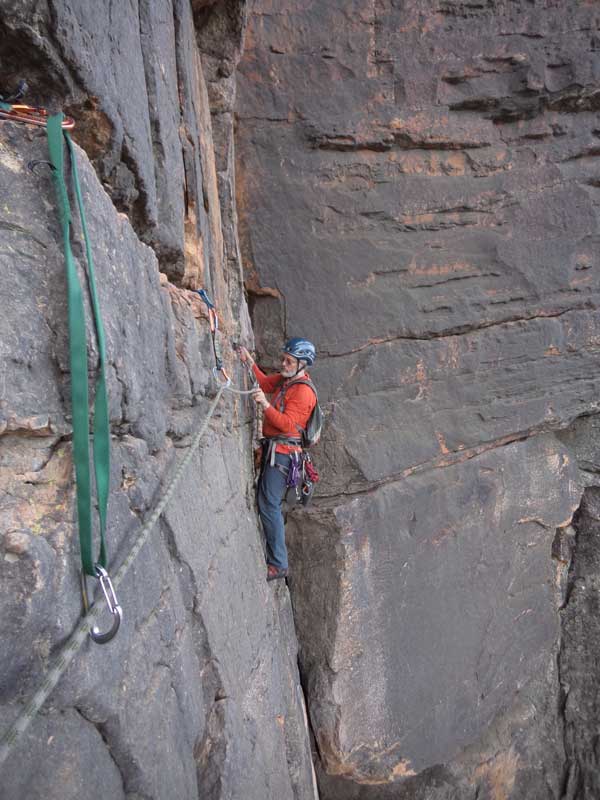
Mike Grainger on the second pitch traverse of Scarab at Bundaleer crag in the Grampians.
Unlike many older climbers that tend to focus on one aspect of the sport, you seem quite comfortable participating in everything from bouldering to multi-pitch trad. Care to discuss?
Mike Grainger: To me, climbing is climbing – each discipline has somewhat different demands and rewards, but they all involve physical effort, movement and personal development to meet a challenge. I put up with the mountaineering suffer-fest because nothing beats the 360-degree view from the summit of a big peak. Bouldering is great because it is all about the movement – no gear or rope skills required, and you can dispense with other people if you are so inclined (although the social aspects of the posse approach can be enjoyable as well). I think that my proclivity for solo bouldering has contributed to a fairly good lead head. Sport climbing facilitates high volume and building strength and skill in relative safety. Trad climbing, especially in the multi-pitch and adventure climbing varieties, is a much more cerebral game that demands a wide range of knowledge and skills to pursue safely, but the satisfaction when you pull it off is very substantial. I am a climbing ethics agnostic; if my partner is old-school and wants to do a new route ground-up with no previous inspection, I can play by those rules, but I am just as happy to belay a sport climbing partner who is taking whippers on a project with pre-hung draws.
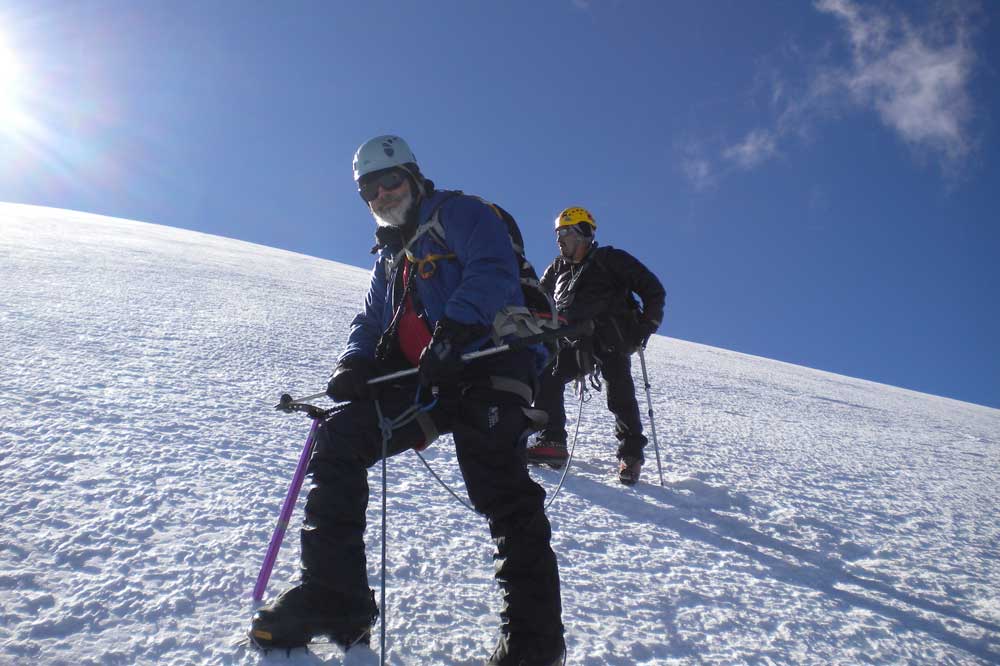
Mike Grainger descending from the summit of Orizaba.
What do you feel is the hardest thing about taking up climbing at a later stage in your life?
Mike Grainger: Really, I haven’t found it hard at all. Making the decision to retire at 55 certainly helped, as the free time and adequate financial resources allow me to explore the intersection between interesting destinations and good climbing. As an otherwise fairly competitive person, I think that I feel less pressure to push the grades than I would have if I had started earlier. As a Never Was, I don’t worry much about being a Has Been, and it is good for the morale to know that I am climbing as well now as I ever have.
You’ve travelled extensively for climbing. What are your favourite places so far and why?
Mike Grainger: Hueco Tanks can’t be beat for bouldering: so many problems at all grades in a compact area. California has a multitude of opportunities in every climbing discipline: Yosemite, Joshua Tree, Bishop, the Sierras, Lover’s Leap, the list goes on and on. Arapiles in Australia is a moderate trad climber’s paradise. Mt. Kenya offered wildly beautiful and peaceful trekking on the approach and several long technical routes to its various summits. I have developed functional Spanish language skills and take advantage of the low travel costs and warm weather of Central and South America whenever I can.
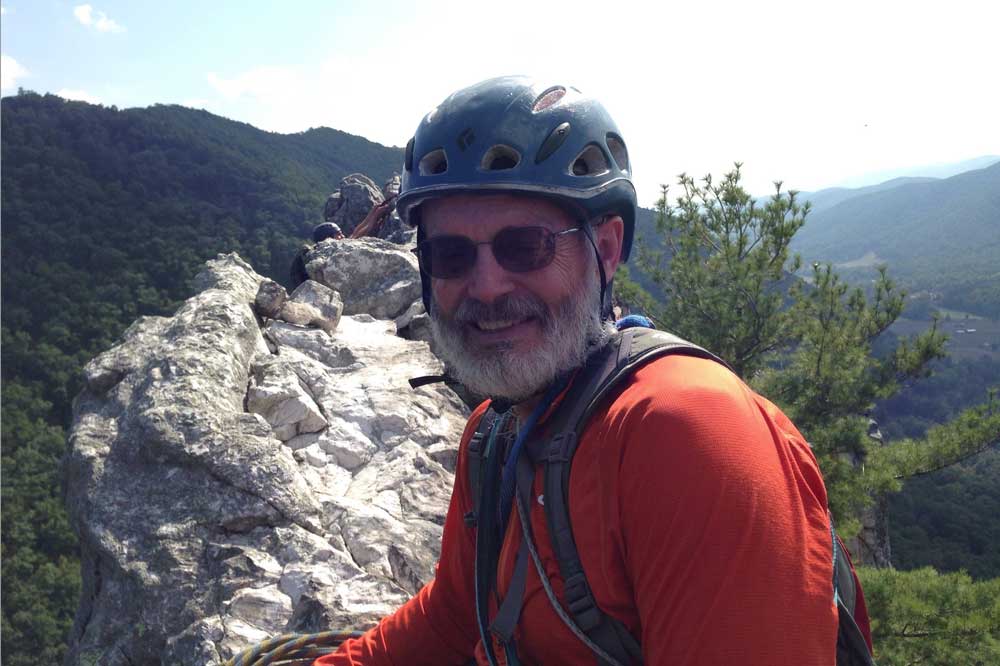
Mike Grainger on the Seneca South Peak summit in Seneca Rocks.
Do you have any specific training or workouts that you use to stay fit for climbing?
Mike Grainger: Basically, I train for climbing by climbing, preferably on real rock, but in the gym when necessary. I maintain a high level of general fitness through weight training, running, cycling and, in poor conditions, using an elliptical trainer. I am a believer in high-intensity interval training. With good strength and cardio fitness I feel that I can handle multiple high-intensity days and am less likely to injure myself.
Why do you think many climbers drop out of the sport as they get older?
Mike Grainger: Our culture sends fairly strong messages about what activities are appropriate at a given age, and some people unthinkingly buy into them. Responsibilities pile up as you get older, and it is easy for climbing to get squeezed out of the priorities. It can be hard getting back in, particularly if you have adopted a pattern of inactivity and put on some weight. If you were a stud climber in your youth, I imagine the fall-off in the grades you can send is somewhat demoralizing. And, unfortunately, with age, some people acquire injuries or ailments that make climbing difficult or impossible.
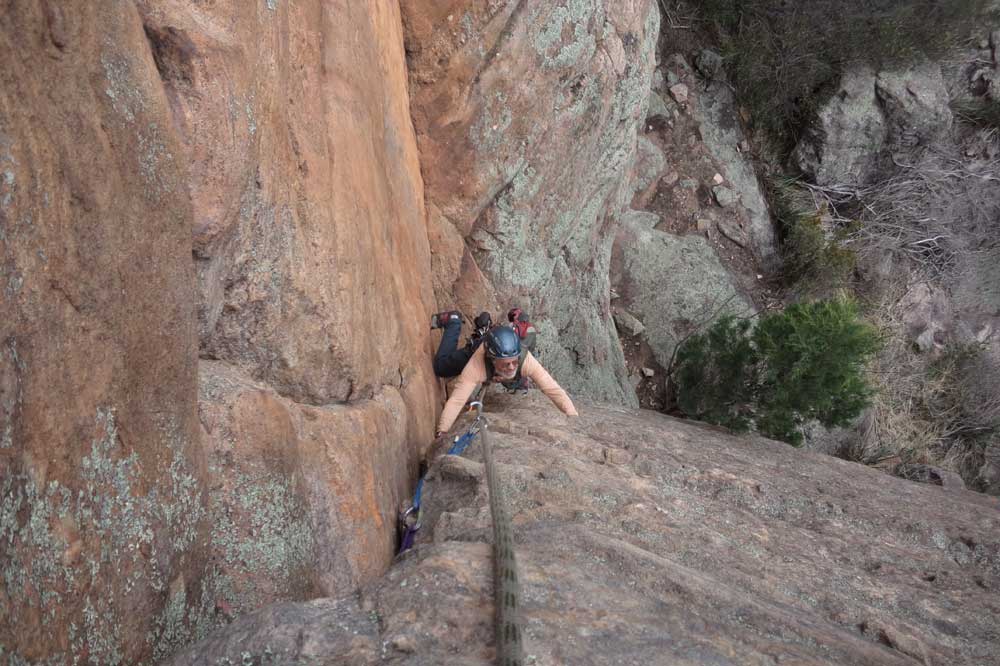
Mike Grainger on the second pitch of Beau Geste in Arapiles.
What do you enjoy most about climbing?
Mike Grainger: The movement, especially of the big moves on big holds variety. I can climb slab or crimp when necessary, but have a hard time telling myself that I am having fun. In mountaineering, in particular, I enjoy the sense of privileged access – using stamina, strength and skill to be in places most people don’t get to experience.
I suspect that it’s difficult finding climbing partners who are your age. Who are your usual climbing partners?
Mike Grainger: My climbing partners are always younger (although I did have the pleasure of climbing with George Lowe once in Yosemite). I have some semi-regular partners who I travel with during their vacations. I prefer to climb weekdays, and there are a few guys who fit in a day here and there depending on their work schedule. Once in a while, I will introduce a young gym climber to the outdoors; this can be a regular arrangement for a while until school or work take them out of the area. I join ACC outings and trips. It would be nice to have a steady partner, but it hasn’t worked out that way.
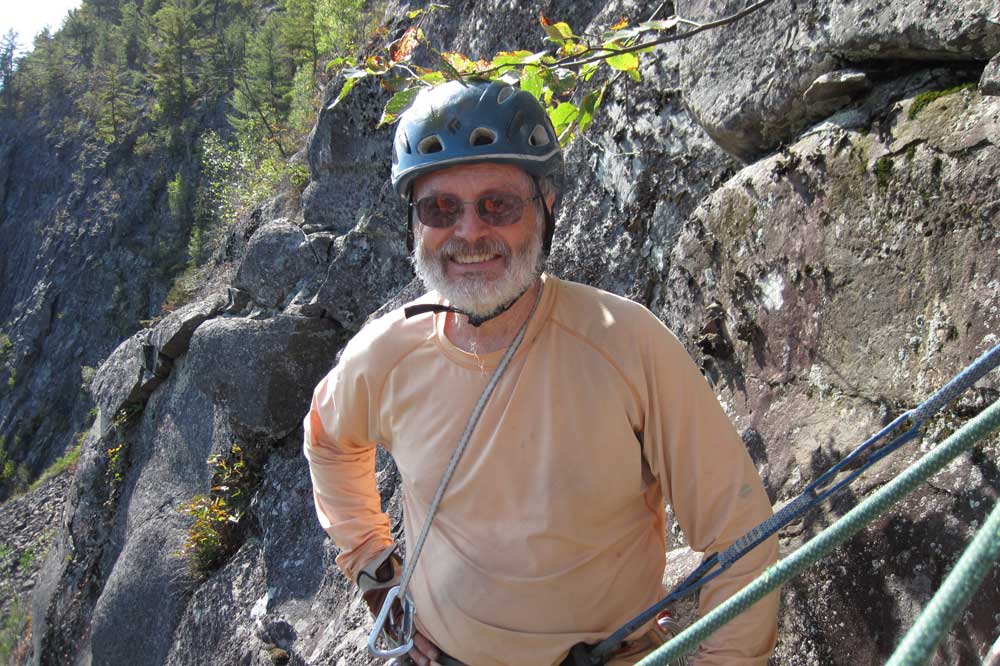
Mike Grainger enjoying the beautiful isolated climbing at Eyeball Crag in Ontario.
Ok, what are your thoughts on climbing gyms?
Mike Grainger: There are many worse ways for people to spend their time, and many climbers will never leave the gym. I’m not going to get all elitist about gym climbers. Yes, they have a lot to learn when they start climbing outdoors, but I find that most of them want to do the right thing if someone will give them some guidance as to what the right thing is.
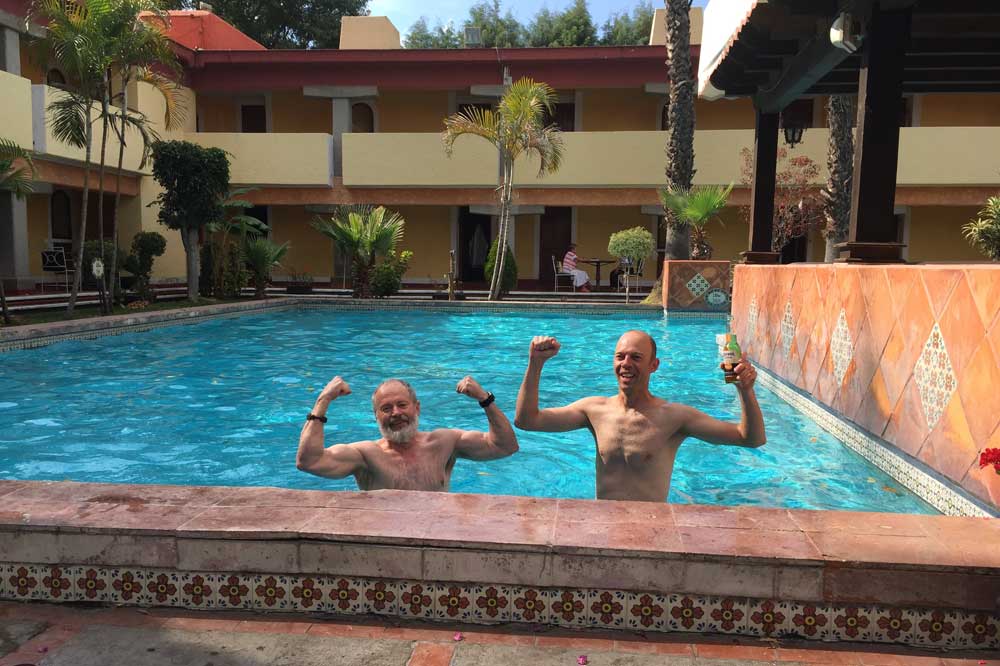
Mike Grainger (on the left) enjoying a rest day in Cholula, Mexico that eventually turned into a tequila-soaked mess.
Finally, do you have any climbing goals for this season?
Mike Grainger: I want to have a great time on my five-week March-April climbing trip to South Africa. Ditto for two weeks in Scotland June-July, including, I hope, climbing the Old Man of Hoy and other sea stacks. It would be nice to get to either the Bugaboos or the Gunks. I am toying with the idea of going to Kalymnos in October/November. Anyone want to tag along?
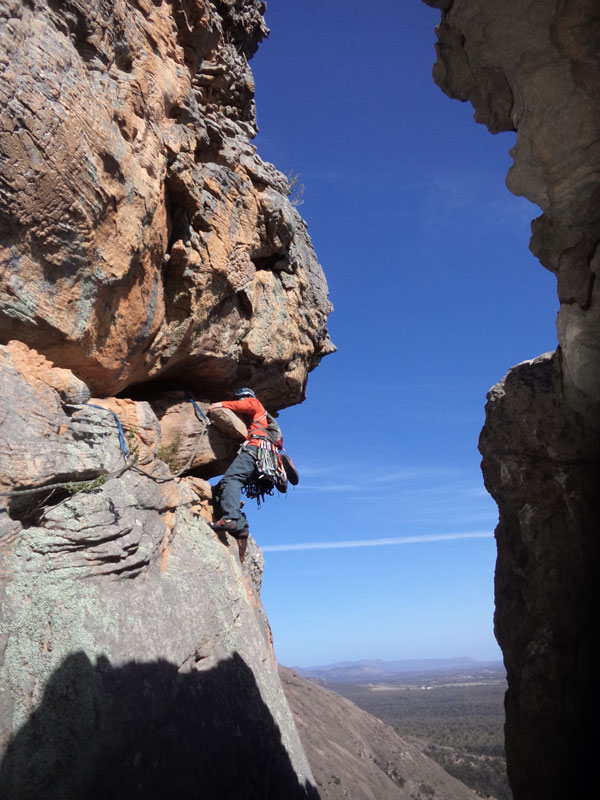
Mike Grainger on the tricky third-pitch traverse of Crank, a not so well known multi-pitch route in the Stapylton Amphitheatre of the Grampians.


